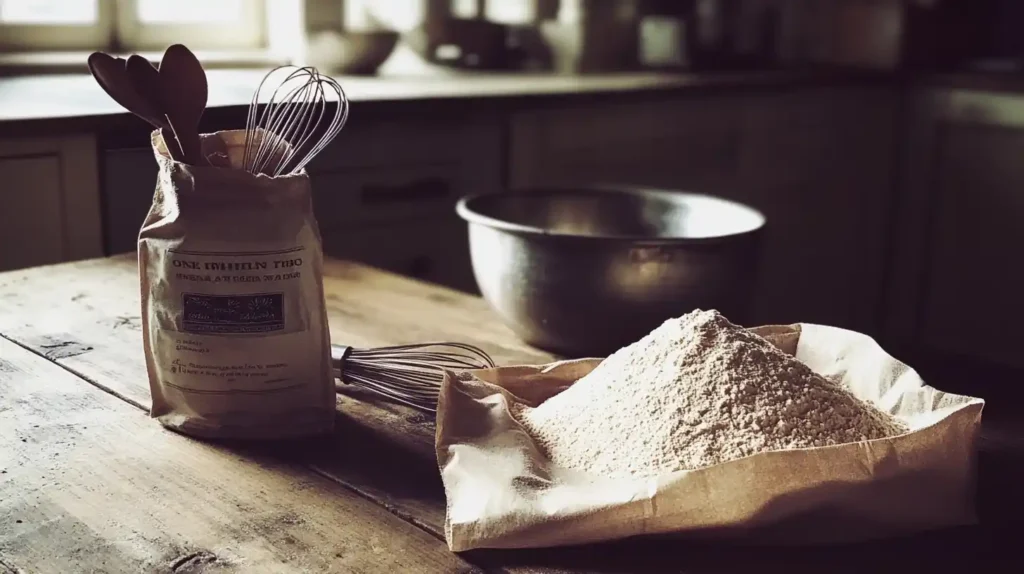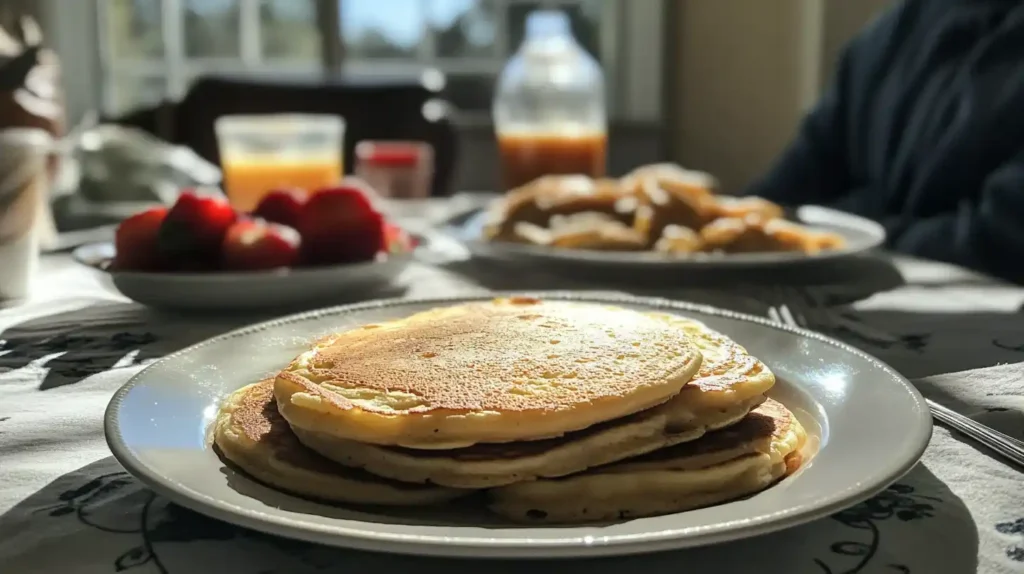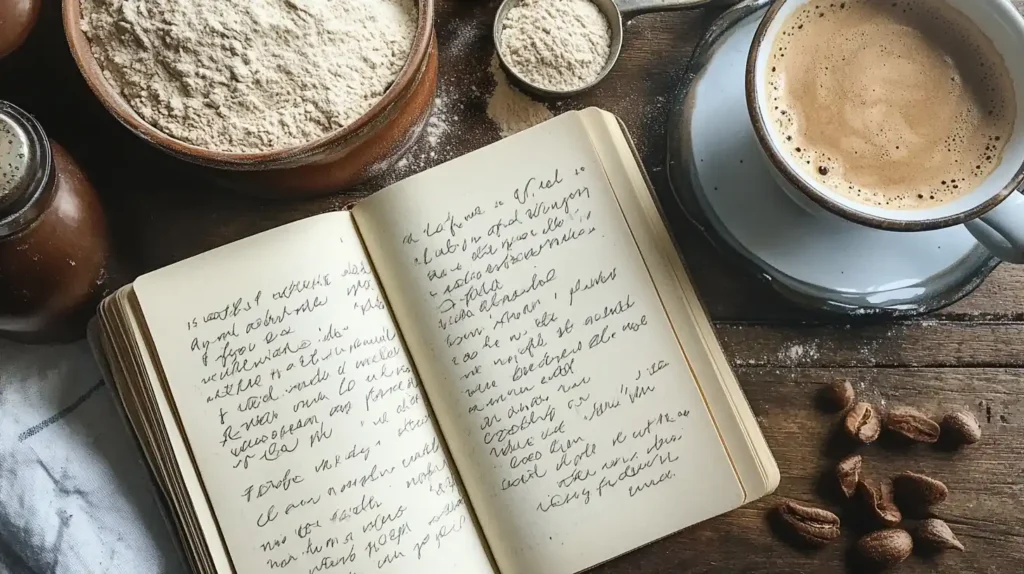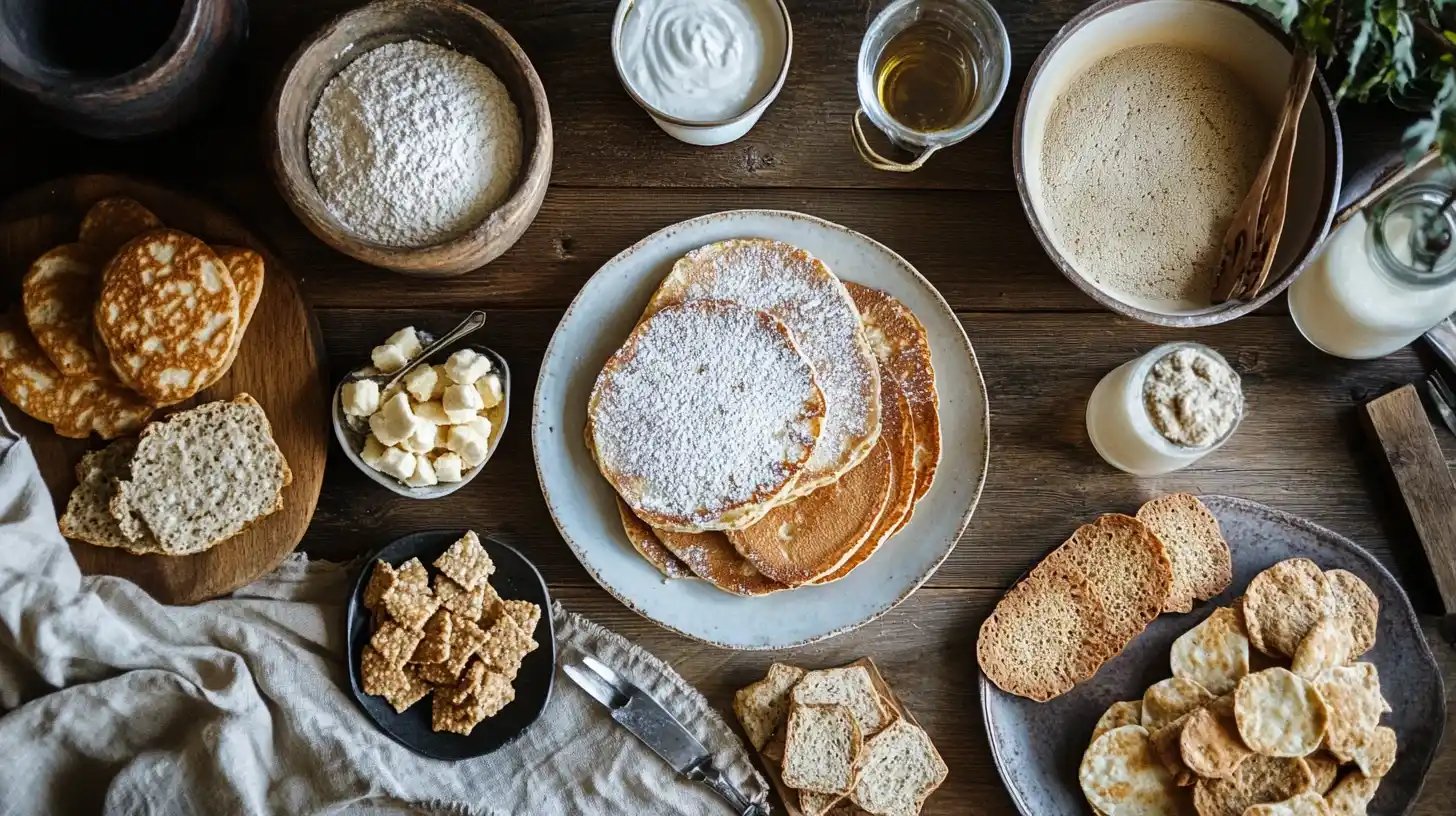If you’re looking for a gluten-free alternative that’s nutritious and versatile, you’ll love exploring buckwheat flour recipes. This amazing flour is rich in protein, fiber, and essential nutrients. Plus, it’s a fantastic choice for baking and cooking, offering great taste and health benefits. Let’s explore how you can use buckwheat flour to make delicious sweet and savory dishes.
Table of contents

Why Choose Buckwheat Flour for Your Recipes?
Buckwheat flour is a standout option for anyone looking to create healthy, flavorful, and gluten-free dishes. Its unique combination of health benefits, versatility, and robust flavor makes it an essential addition to any kitchen. Let’s explore why buckwheat flour deserves a place in your pantry.
1. Nutritional Powerhouse
Buckwheat flour is packed with nutrients that support overall health. Here’s what makes it special:
- High in Protein: It’s a great plant-based source of protein, making it ideal for vegetarians and vegans.
- Rich in Fiber: The fiber content supports digestive health and helps maintain steady blood sugar levels.
- Essential Minerals: It’s loaded with magnesium, zinc, and iron, all of which are vital for energy and immune function.
Unlike many gluten-free flours, buckwheat flour also contains antioxidants, which help fight inflammation and promote heart health.
2. Naturally Gluten-Free
For those with gluten sensitivities or celiac disease, buckwheat flour is a safe and delicious option. Unlike some gluten-free flours that require additives or blends, buckwheat flour works well on its own or in combination with other flours. Its natural gluten-free quality ensures you can enjoy your favorite baked goods without compromising on flavor or texture.
3. Versatile in Cooking and Baking
One of the best things about buckwheat flour is its versatility. It’s not limited to just one type of recipe—you can use it in both sweet and savory dishes. For example:
- Sweet Recipes: Use it in pancakes, muffins, cookies, and cakes. Its earthy flavor adds depth to desserts.
- Savory Dishes: Try it in flatbreads, crackers, veggie patties, and even pasta.
Its ability to enhance a wide range of dishes makes it a favorite among both home cooks and professional chefs.
4. Diet-Friendly
If you’re following a specific diet, buckwheat flour fits into many healthy eating plans. It’s:
- Vegan and Vegetarian-Friendly: Great for plant-based diets.
- Low Glycemic Index: Helps keep blood sugar levels stable, making it suitable for those managing diabetes.
- Rich in Complex Carbs: Provides long-lasting energy without causing sugar spikes.
5. Unique Flavor Profile
Unlike bland gluten-free options, buckwheat flour has a distinct, nutty flavor. This unique taste enhances the overall character of both sweet and savory recipes, making them more satisfying and memorable.
6. Sustainability and Accessibility
Buckwheat is not only good for your body but also for the planet. As a resilient crop, it thrives in various climates without the need for heavy chemical use. Additionally:
- It’s widely available in organic varieties.
- Affordable compared to some specialty gluten-free flours.
By choosing buckwheat flour, you’re supporting sustainable farming while enjoying a high-quality ingredient.
For more on the benefits and ways to use buckwheat flour, check out this helpful guide to organic buckwheat flour and learn how to incorporate it easily into your diet.
Sweet Buckwheat Flour Recipes
Start your day with a touch of sweetness or whip up a dessert that’s not only tasty but also nutritious.
Fluffy Buckwheat Pancakes
If you’re a fan of pancakes, these light and fluffy buckwheat pancakes are a must-try. For an alternative spin, explore this recipe for Protein Blueberry Pancakes to add a fruity twist to your breakfast while keeping it healthy.

1. Fluffy Buckwheat Pancakes
Begin your day with these soft and fluffy pancakes. They’re easy to make and taste amazing.
Ingredients:
- 1 cup buckwheat flour
- 1 teaspoon baking soda
- 2 tablespoons sugar
- 1 cup milk (dairy or plant-based)
- 1 egg
Instructions:
- Mix the dry ingredients in a bowl.
- Whisk the milk and egg together, then slowly add them to the dry mixture.
- Heat a skillet and pour in the batter. Cook until bubbles appear, then flip to cook the other side.
Pro Tip: Add cinnamon or vanilla for a little extra flavor. These pancakes go perfectly with fresh fruit or maple syrup.
2. Chocolate Banana Muffins
These muffins are moist, chocolaty, and perfect for snacking or dessert.
Ingredients:
- 1 cup buckwheat flour
- 2 ripe bananas, mashed
- ½ cup chocolate chips
- ¼ cup honey or maple syrup
- 1 teaspoon baking powder
Instructions:
- Preheat the oven to 350°F (175°C).
- Mix the dry ingredients in one bowl and the wet ones in another.
- Combine the two mixtures and stir until smooth.
- Scoop the batter into a muffin tin and bake for 20–25 minutes.
3. Peanut Butter Cookies
Craving something crunchy yet soft? These cookies are a must-try!
Ingredients:
- 1 cup buckwheat flour
- ½ cup peanut butter
- ⅓ cup sugar
- 1 egg (or flaxseed substitute for vegan option)
Instructions:
- Mix all the ingredients in a bowl until you get a smooth dough.
- Shape the dough into small balls and arrange them on a baking sheet.
- Press each ball down with a fork to make a crisscross pattern.
- Bake at 350°F (175°C) for 10–12 minutes.
For more sweet ideas, visit The Bojon Gourmet, which has plenty of creative recipes to try.
Savory Buckwheat Flour Recipes
Buckwheat flour is not just for sweets—it’s also a fantastic choice for savory dishes. Its earthy, nutty flavor adds depth to a variety of meals. Whether you’re making bread or hearty snacks, buckwheat flour recipes bring something special to the table.

1. Hearty Sourdough Bread
This bread is perfect for sandwiches or as a side with soups and salads. The tangy flavor of sourdough pairs beautifully with buckwheat flour.
Ingredients:
- 1 cup buckwheat flour
- 1 cup all-purpose gluten-free flour
- 1 cup sourdough starter
- 1 teaspoon salt
- 1 cup water
Instructions:
- Combine all the ingredients in a large bowl until a dough forms.
- Allow the dough to rise in a warm place for 4–6 hours.
- Preheat your oven to 400°F (200°C). Shape the dough into a loaf and bake for 30–35 minutes.
Pro Tip: Add seeds like sunflower or sesame for extra texture and flavor.
2. Flatbreads and Crackers
Quick and easy to make, flatbreads and crackers are versatile snacks or sides.
Flatbreads:
- Combine 1 cup buckwheat flour, ½ cup water, and a pinch of salt to form a dough.
- Roll out thin circles and cook on a hot skillet for 1–2 minutes per side.
Crackers:
- Mix 1 cup buckwheat flour with 2 tablespoons olive oil and enough water to form a dough.
- Roll out thinly, cut into squares, and bake at 350°F (175°C) for 10–12 minutes.
These pair wonderfully with dips like hummus or guacamole.
3. Veggie Patties
Use buckwheat flour as a binder for vegetable patties. It keeps the patties firm while adding a rich flavor.
Ingredients:
- 1 cup grated zucchini or carrots
- ½ cup cooked quinoa or rice
- ¼ cup buckwheat flour
- 1 egg (or flaxseed substitute for vegan option)
- Spices like paprika or cumin
Instructions:
- Mix all the ingredients together until a sticky mixture forms.
- Form the mixture into patties and cook in a skillet over medium heat until golden brown on both sides.
Pro Tip: Serve these patties with a fresh salad or in a burger bun.
Tips for Cooking with Buckwheat Flour
To get the best results from buckwheat flour, keep these tips in mind:
- Combine with other flours for a balanced texture.
- Add more liquid to adjust for its high absorbency.
- Experiment with both sweet and savory flavor combinations.
For more baking inspiration, explore this helpful guide on Perfect Cinnabuns to master your dough techniques.
1. Combine Buckwheat Flour with Other Flours
Buckwheat flour is dense, and using it alone can result in a heavier texture. To lighten your baked goods or dough, mix it with other flours:
- Use almond flour or rice flour for cakes and cookies to add lightness.
- Combine with tapioca flour for chewy flatbreads or crackers.
For most recipes, a 50:50 ratio works well, but feel free to experiment depending on your dish.
2. Adjust the Liquid Ratio
Since buckwheat flour absorbs more moisture than other flours, your dough or batter might feel thicker than expected. To ensure a smooth consistency:
- Add 1–2 tablespoons of extra liquid at a time, whether it’s water, milk, or a plant-based alternative.
- For bread dough, aim for slightly sticky dough—this helps create a softer crumb.
3. Avoid Overmixing
Overmixing batter or dough can result in a tough texture, especially with buckwheat flour. To prevent this:
- Stir the ingredients only until just combined.
- Allow the mixture to rest for 5–10 minutes. This lets the flour hydrate, improving its texture.
4. Balance the Nutty Flavor
Buckwheat flour has a distinct earthy, nutty taste, which some may find too strong. To balance it:
- Use cinnamon, vanilla, or nutmeg in sweet recipes for added warmth.
- Add herbs like rosemary, thyme, or garlic in savory dishes to complement the flavor.
Balancing flavors ensures that buckwheat flour enhances rather than overpowers your dishes.
5. Blend for Texture
For pancakes, muffins, or breads, blending buckwheat flour with all-purpose or gluten-free flours creates the best texture. Some common blends include:
- 1 part buckwheat flour + 1 part almond flour for muffins or cookies.
- 2 parts buckwheat flour + 1 part tapioca flour for savory crackers.
6. Use It as a Thickener
Thanks to its high starch content, buckwheat flour works as an excellent thickener for sauces and soups. To use it:
- Whisk 1–2 tablespoons of buckwheat flour with cold water to form a slurry, then stir it into the simmering sauce or soup.
- It thickens quickly, so start with small amounts and adjust as needed.
7. Experiment with Recipes
If you’re new to buckwheat flour, start with simpler recipes like:
- Pancakes or flatbreads.
- Cookies or muffins.
As you grow more confident, you can move on to more complex dishes like sourdough bread or veggie patties. Every dish you try will help you better understand how this flour behaves.
8. Keep It Fresh
To maintain the best flavor and texture, store buckwheat flour properly:
- Store it in an airtight container to keep out moisture.
- Store it in a cool, dry place or refrigerate for longer shelf life.
- Freezing buckwheat flour also works well, especially if you don’t use it often.
FAQs About Buckwheat Flour Recipes
Here are answers to some common questions about using buckwheat flour in your cooking and baking.
1. Can buckwheat flour replace regular flour in all recipes?
Not entirely. While buckwheat flour is versatile, it’s denser than wheat flour. For better texture, it’s often combined with other flours in a 50:50 ratio. For example, mixing it with oat or almond flour works well for cakes and cookies.
2. Is buckwheat flour gluten-free?
Yes, buckwheat flour is naturally gluten-free. It’s a great option for people with celiac disease or gluten sensitivities. However, if you’re buying it pre-packaged, check the label to ensure it wasn’t processed in a facility that handles wheat products.
3. How should I store buckwheat flour?
To keep it fresh:
- Store it in an airtight container.
- Store it in a cool, dry place, such as a pantry.
- For longer storage, refrigerate or freeze it to prevent the oils in the flour from going rancid.
4. What’s the best way to balance the flavor of buckwheat flour?
Some people find buckwheat flour to have a strong, nutty flavor. To balance it:
- Use sweeteners like honey or maple syrup in sweet recipes.
- Add spices like garlic or rosemary in savory recipes.
5. Can I make buckwheat flour at home?
Yes! Simply grind raw or roasted buckwheat groats in a blender or food processor until fine. Sift the flour to remove any larger pieces.
Final Thoughts
Adding buckwheat flour recipes to your kitchen routine is a simple and exciting way to enjoy healthier, tastier meals. Not only is this gluten-free flour packed with nutrients, but it also brings a unique flavor to your dishes. Moreover, it’s versatile enough for both sweet and savory creations, ensuring there’s always something new to try.

For instance, you can start your day with fluffy pancakes or bake hearty bread for a comforting dinner. Additionally, it’s perfect for those following specific diets, such as vegan or gluten-free. Its natural nuttiness enhances the flavors of any recipe, making it a favorite for home cooks and chefs alike.
At the same time, buckwheat flour is easy to work with when you follow a few key tips, like adjusting liquids and blending it with other flours. Furthermore, it’s accessible and affordable, making it a practical choice for anyone looking to improve their diet without breaking the bank.
By choosing buckwheat flour, you’re not just making healthier meals; you’re also embracing a sustainable and eco-friendly ingredient. So why not start experimenting today? Whether you’re baking cookies, frying flatbreads, or trying something entirely new, buckwheat flour is a reliable and rewarding choice.
In conclusion, buckwheat flour opens up endless possibilities in the kitchen. With its rich nutritional benefits, unique flavor, and versatility, it’s time to make it a staple in your pantry. Give it a try—you’ll be glad you did!

